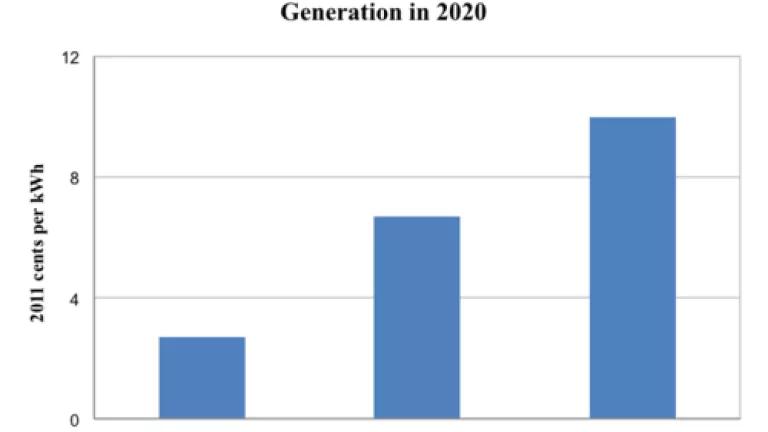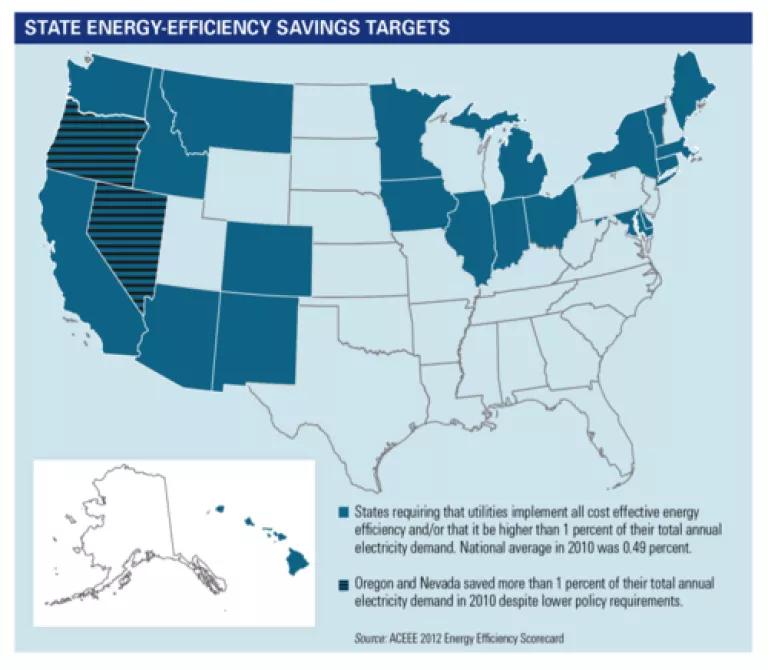
As hoped, President Obama’s climate action plan directs the Environmental Protection Agency to establish carbon pollution standards for existing power plants under the Clean Air Act. Energy efficiency, America’s cheapest and cleanest energy resource, has significant potential to cut those emissions and should be among the tools that states can use to meet new pollution requirements.
The president’s plan doesn’t explicitly identify energy efficiency as a compliance strategy - he rightly left it to EPA, in collaboration with states, utilities and other stakeholders, to figure out how to shape the standards over the coming months. But including it as we’ve recommended in our proposal Closing the Power Plant Loophole, would allow the EPA to set a strong standard that protects our families, while giving states a low cost and flexible way to lower carbon pollution and driving local job growth.
Following his re-election, President Obama said, “We can create jobs, advance growth and make a serious dent in climate change and be an international leader. “ Energy efficiency has already made serious progress in the first three goals – creating jobs and growth while reducing the harmful effects of climate change – and we’ve just begun. Expanding our efficiency efforts can provide even greater economic benefits while making our nation a global energy efficiency leader.
Efficiency Boosts The Economy
Energy efficiency – using better technology and innovation to provide the same or better services with less energy -- has already played a much larger role in making the United States one of the world’s leading economies than most people realize. The American economy has tripled in output in the last 40 years, but our energy use has only increased by a third. Put another way, the amount of energy needed to produce a dollar’s worth of goods and services has been cut in half over that same period because we are doing more with the same amount of energy.
By increasing the efficiency with which we power our economy, we’ve saved more energy from efficiency improvements than we’ve produced from all our new power plants, gas wells, and oil fields since 1973. And that’s with only half-hearted and sporadic pursuit of the opportunities available to cut energy consumption, such as using improved light bulbs and refrigerators, or weatherizing our homes. If we had been just a little more serious, a study by the American Council for an Energy Efficiency Society (ACEEE) notes, we might even have cut our energy use below 1970 levels.
The good news is that we can still reduce it below today’s levels while growing our economy over the next few decades. Studies show the possibilities for reductions from efficiency are huge, available everywhere, and at a scale that could significantly contribute to the nation’s ambitious global warming reduction goals. Several state, regional, and national studies show potentials of 20 to 30 percent cost-effective savings -- or more -- in the next decade or two. And those studies are conservative, with most assuming the same mediocre pursuit of efficiency as in past years.
But ACEEE looked at what could happen if we got really serious: energy use could be reduced by 40 to 60 percent by 2050 – increasing national Gross Domestic Product by $200 billion annually, while saving consumers $16 trillion (cumulatively) and producing 2 million new jobs. That’s enormous!
Including energy efficiency in an emissions standard for existing power plants would provide states with important flexibility at relatively low cost. Energy efficiency programs have typically delivered cost-effective savings at an average net cost of 2.5 cents per kilowatt hour, or less than half the cost of fossil fuel alternatives.
Sources: U.S. Energy Information Administration (2013) and ACEEE Friedrich, et. al. (2009)
Scaling-Up Energy Efficiency
Investments in this area have already avoided the need for hundreds of large power plants and slashed millions of tons of carbon pollution, and several states have proven we can quickly ramp up energy efficiency to contribute to large-scale decreases in emissions, even in places like Arizona, Ohio and Michigan where programs haven’t been in place as long as in California and Minnesota.
Utilities are scaling up customer-funded investments in electric efficiency programs nationwide, increasing from $2.7 billion in 2007 to nearly $7 billion in 2011, with a corresponding surge in energy savings. In Ohio, alone, utility efficiency efforts created more than 3,800 jobs through 2011 and will create more than 32,000 jobs by 2025. Even states with long-standing policies like Massachusetts increased employment in the efficiency sector to 40,000 in 2012, a 10% increase from 2011.
And more states are adopting significant energy-savings goals.

Lack of information, access to capital or product choices, and other market barriers stand in the way of people making energy-efficient choices, and old school regulatory structures in many states discourage utilities from investing in efficiency despite it being generally cheaper and less risky than financing power plants. Fortunately, we can overcome these obstacles with energy-saving programs, minimum efficiency standards for buildings and appliances, research and development, and regulatory reform. The president’s plan can help too.
His action plan calls for more reliance on energy efficiency overall, which will create new jobs. It also can be an important tool in meeting his primary goal of slashing power plant pollution. It’s a win-win for our environment -- and our economy.

